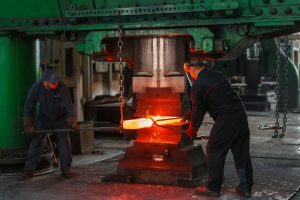 You know, the team at RW Steel may have been doing you a disservice. It’s a rarity, we’ll give you that, because normally, the art of providing service is second nature for each of us at the company. We wake up and immediately think about how we’re going to reach the next level of quality in our interactions and working with products when we arrive on the job. We’re guessing that that’s’ another rarity – hearing that a team or a company is excited to seize the day and get on the job as quickly as possible. Well, we’re guilty on both charges and we love sharing the passion and the information that we amass with you. Whether you’re out and about right now, or you’re resting at home, at some point, there has definitely been a spike in those looking to work on their brain muscles and learn new facts. Since steel is our forte, consider this “Steel 101… part one”. There is far too much knowledge to fit in just one post. Read on for more information:
You know, the team at RW Steel may have been doing you a disservice. It’s a rarity, we’ll give you that, because normally, the art of providing service is second nature for each of us at the company. We wake up and immediately think about how we’re going to reach the next level of quality in our interactions and working with products when we arrive on the job. We’re guessing that that’s’ another rarity – hearing that a team or a company is excited to seize the day and get on the job as quickly as possible. Well, we’re guilty on both charges and we love sharing the passion and the information that we amass with you. Whether you’re out and about right now, or you’re resting at home, at some point, there has definitely been a spike in those looking to work on their brain muscles and learn new facts. Since steel is our forte, consider this “Steel 101… part one”. There is far too much knowledge to fit in just one post. Read on for more information:
Steel is one of the oldest, if not THE oldest, man-made material in existence. Today, it’s made a wee bit differently than it was 1,000, 500 or even 100 years ago. Both legacy and innovation are important to the RW Steel team, but in order to keep you coming back, we’ll focus on innovation today and the smart way that companies are manufacturing steel in less than 10 steps.
- First and foremost, the iron must be made. It’s the only way to create pure steel. There are just a few items that go in and they include lime, iron ore and coke. The blast furnace melts them down into hot metal, often also called molten iron. This is the right time to remove any impurities, which can hurt the integrity of the material later on in the process or when being used.
- There are both primary and secondary steelmaking definitions; in the primary step, the impurities just mentioned are removed when the hot metal meets scrap steel. This pushes the oxygen right through the furnace, cleaning up the material. Secondary steelmaking focuses more heavily on a grading scale, which can help experts determine what to use it for, based on the amount and types of impurities that still remain. There are a handful of different techniques that you can take advantage of like raising or lowering the temperature, ladling injection or stirring.
- And the third and last step that we’ll share today is continual casting. Here’s where steel really starts to look like steel as it’s cast into the moulds where it will properly cool. It becomes hard, but experts draw it out of the mould while it’s still warm using guided rollers. Next, time to cut it into the shape and the length that you need for your particular use before it heads on to slabbing.
Curious? We assumed. Visit us for our next post, when we share more of the steps to create this important material.